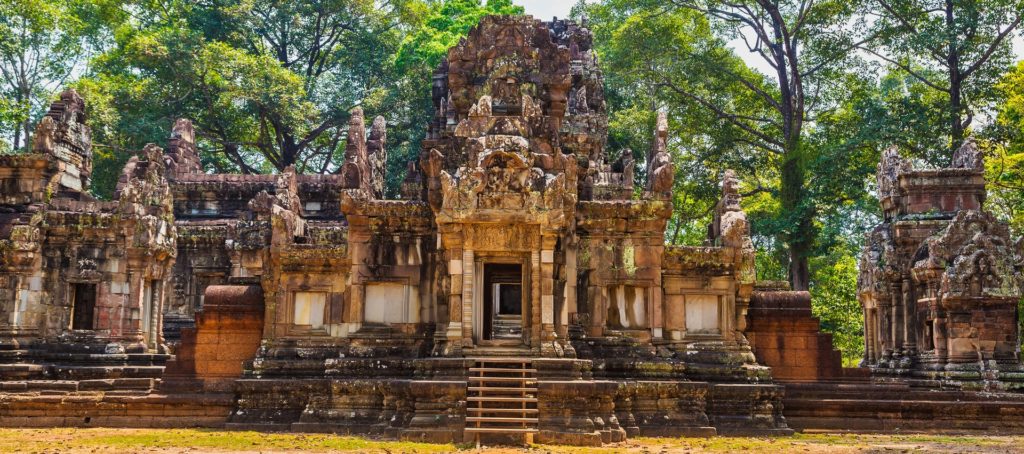Chau Say Tevoda – The Tempel of Shiva and Vishnu
The temple Chau Say Tevoda is located in the province of Siem Reap directly next to the famous temple complex Angkor Thom and was built in the 12th century by Khmer King Suryavarman II. Directly opposite is the “twin temple” Thommanon, which, however, has already partially lost its boundary wall due to the long time since its construction. The Hindu temple Chau Say Tevoda was dedicated to the deities Shiva and Vishnu, and numerous sculptures of the two can be found in the complex. Under the reign of Jayavarman VII, the temple complex was then further decorated. The name of the temple means something like “productive grandchildren of a deity”.

Chau Say Tevoda is variously preserved in different places. Over the centuries, vandalism has occurred repeatedly in the temple buildings, which of course has left a permanent damage. Also the two libraries of the temple (which is actually a peculiarity that there are two of them in one complex) are badly deteriorated, which is probably also due to the sandstone used. Initial restoration work was undertaken as early as the 1960s, a major project that also included the Thommanon temple. In the early 2000s, the temple complex was finally carefully restored again by a Chinese team, with about 4,000 individual parts found on the surfaces being rebuilt back into place. Two illustrations are also still well preserved, namely effigies of Monkey King Vali’s fight with his half-brother and the Death of the Monkey King.
Chau Say Tevoda is surrounded by a wall of laterite, and its footprint is only 50 meters by 40 meters. Thus, the temple is much smaller than other complexes of that time and even noticeably smaller than Thommanon. There are four buildings on the site, constructed of sandstone: the gopura to the east, the prasat, a former assembly hall, and a gopura to the west. In addition to the two gopuras, two other gate towers are found at Chau Say Tevoda, each facing one of the cardinal directions. The long hall connecting the gopuras with the central temple chamber was decorated with numerous flowers. Finally, to the east is a causeway leading to the Siem Reap River.
For visitors, it is recommended to combine a trip to the temple complex Angkor Thom also immediately with Chau Say Tevoda, because the way is actually very short: more precisely, when leaving Angkor Thom through the Victory Gate, you are virtually already in front of the temple complex of the latter and its twin Thommanon. Due to the extensive restoration work, the temple is now completely accessible again.